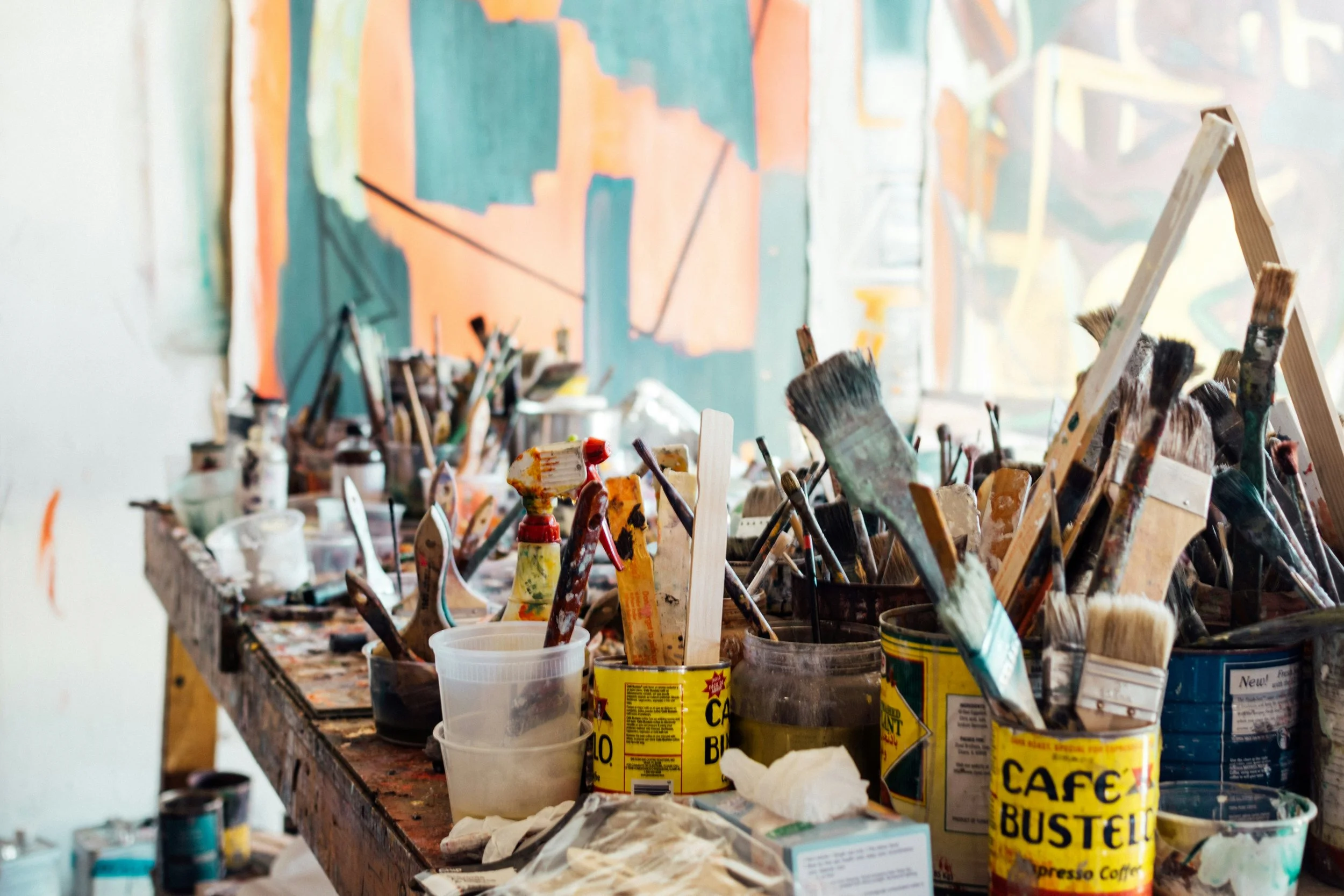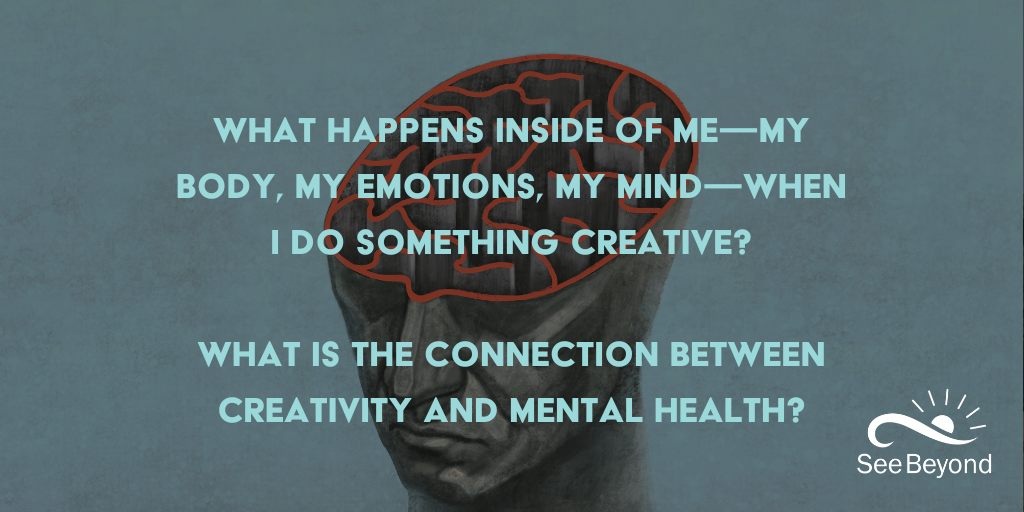Is Creativity Good for My Mental Health?
I felt like I was going crazy. It had been weeks, even months, since I had written. For me, writing has always been my best friend, my safe place to process, the sturdy container where I dumped everything, the solid rock that brought stability in the midst of life’s storms, the peaceful oasis that grounded me and my anxious thoughts.
Writing is good for me. As soon as I pick up the pen and begin sweeping my hand across the page, everything inside of me relaxes: my restless body, my anxious soul, my haywire emotions, and my racing mind.
I’m not crafty, and I wouldn’t consider myself an artist. However, I recently discovered something new about art. While at a retreat center this year, I courageously wandered into the Art Therapy Room.
I was greeted by colorful markers, a jar full of scissors, fun Washi tape, a variety of scrapbooking sheets, and a rainbow of construction paper.
I felt like a five-year-old discovering my kindergarten classroom for the first time!
No one else was around, so I explored, cut, colored, glued, and created.
Some of the heaviness in my heart, the tension in my body, and the clutter in my mind seemed to dissipate.
Music is the same way. Sometimes, I just need to do some therapy on the piano keyboard or on my guitar strings. Something mysterious happens when my body journeys alongside an instrument to make music. Something powerful takes place when my vocal chords vibrate in the back of my throat to produce a tuned melody.
Why? What happens inside of me—my body, my emotions, my mind—when I do something creative?
What is the connection between creativity and mental health?
Could picking up some new creative hobbies be good for me—my body, my emotions, my brain, my mind?
Let’s take a look!
The Transformative Impact of Creativity
A review conducted by Science Direct and published in the Journal of Creativity examined the transformative impact creativity has on mental health. It discovered that creative activities have great potential to enhance the well-being of people of all ages, including cognitive, emotional, physical, and social.
The research looked at multiple forms of creativity—writing, music, art, DIY crafts—and the results were clear. The study identified a positive connection between creative expression and mental health due to its influence on emotional regulation, cognitive flexibility, and social connectedness.
How Does Creativity Impact Us?
Let’s look at each of these more closely and their unique bridge with creativity.
1. Emotional regulation involves the different types of emotions that a person experiences, the timing of those emotions, and how those emotions are perceived and expressed.
Creative activities can provide an effective outlet for emotional expression and regulation. Writing, dancing, playing a musical instrument, or painting can allow someone to externalize and express their emotions—both positive and negative—in a symbolic and tangible way.
“Through creation, individuals can channel their emotions, giving them a sense of control and empowerment over their internal experiences. This emotional expression provides a cathartic release and facilitates exploring and understanding one's emotions, promoting self-awareness and introspection.”
In addition, creative activities can trigger a state of “flow.” Flow is a psychological state involving focus, deep engagement, and a sense of timelessness. These flow experiences create a perfect balance between an individual’s skills and the challenges of the creative work, leading to a sense of accomplishment and mastery. As a result, these highly rewarding experiences and achievements promote well-being and positive emotions.
Creative expression is especially effective as a coping mechanism for someone who has experienced trauma. These activities provide an alternative way for survivors to communicate their pain, transforming negative emotions into something meaningful. This is the reason so many hospitals, counselors, and trauma centers offer art therapy for healing.
2. Cognitive flexibility is “a person's recognition of the various choices and alternatives present in any situation, their readiness to adapt and be flexible as required, and their confidence in their own ability to exhibit such flexibility.”
Creativity helps people think outside the box in unconventional ways—explore different perspectives, discover innovative solutions to life’s challenges, and increase their problem-solving skills. This leads to positive feelings of self-efficacy, autonomy, empowerment, and confidence to overcome obstacles. This heightened sense of autonomy results in enhanced self-esteem, which is crucial to building resilience and maintaining positive mental health.
3. “Social connectedness is a feeling of belonging within a community, shaped by deep and meaningful relationships, a sense of attachment to groups, and the experience of mutual social support and interaction.”
Many creative activities involve social interaction and engagement within a community of people who share certain passions and interests. This promotes a sense of belonging and support within a social network, which are crucial to well-being and positive mental health.
In addition, “engaging in creative activities with others can enhance communication, empathy, and understanding, contributing to the development of healthy and fulfilling social relationships.”
Different Forms of Creativity
The study went on to examine the distinctives of various forms of creativity.
Visual Arts—The unique benefits of engaging in visual arts such as drawing and painting are increased self-expression, problem solving, agency, control over one’s circumstances, and a positive self-identity.
Writing—Those individuals who express their creativity through writing identify enhanced emotional expression, psychological well-being, and self-reflection. “Writing serves as a tool for individuals to process their thoughts and emotions, gain insights into their experiences, and find a sense of empowerment and self-identity.” Writers with a trauma background describe writing as an outlet for them to find their voice, shift their self-perceptions, and express and share their traumatic experiences.
Music—Music increases cognitive engagement, emotional expression, and social connectedness. Musical activities provide opportunities for emotional release, cognitive stimulation, bonding with others, and a sense of being present in the moment. A study on drummers, for example, revealed the psychological benefits of music such as reduced depression and increased social resilience. It also identified positive biological changes with an increase in anti-inflammatory responses.
Only Positive!
Even if you don’t consider yourself artistic and crafty, it seems that creativity can only have positive effects on our mental health. We don’t have to worry about anyone else seeing our messy artwork, listening to our untuned instruments, and reading our rough drafts. This is about our mental health. It’s time to get out our therapeutic pens and paper, ukuleles, and paintbrushes!
Listen to this powerful testimony of Kate Wood, “How Does Creativity Benefit Mental Health and Well-Being?”
Guest author, Marci Renée, along with her French husband and four boys, is a global nomad who has traveled to more than 30 countries and has lived in the United States, France, Morocco, and Spain. She loves to travel, speak foreign languages, experience different cultures, eat ethnic foods, meet people from faraway lands, and of course, write and tell stories. She is a published author of children's picture books, memoirs, short stories, and poetry.
You can find Marci and her books on her website.
"The Cultural Story-Weaver," at www.culturalstoryweaver.com



